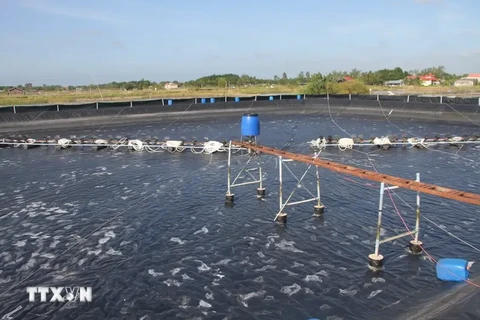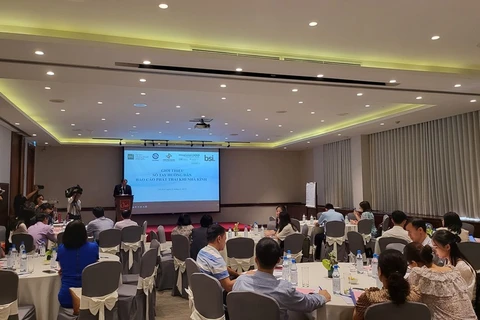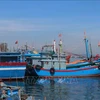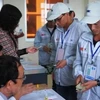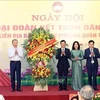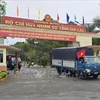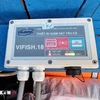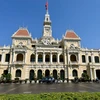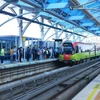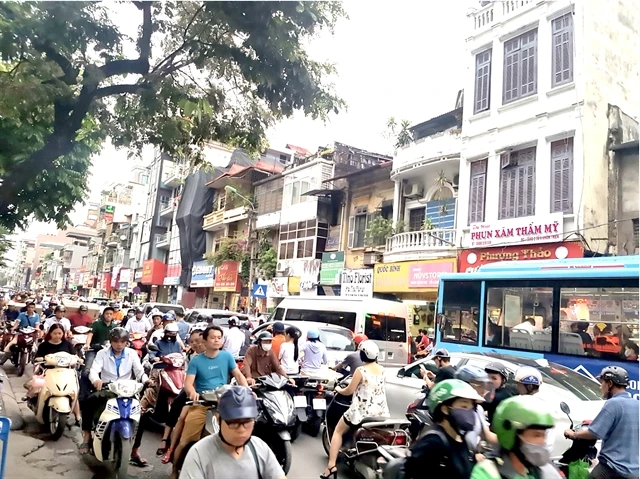
Hanoi (VNS/VNA) - The Ministry of Transport (MoT) recently issued a decision outlining plans to reduce greenhouse gas emissions in the transport sector through 2030.
The plan aims to implement measures to reduce greenhouse gas (GHG) emissions, contributing to Vietnam’s 'Unconditional Contribution' target in its Nationally Determined Contributions – commitments made by countries to reduce emissions under the Paris Agreement – by 2030.
This includes a 5.9% reduction in GHG emissions compared to the business-as-usual (BAU) scenario, corresponding to a reduction of 45.62 million tonnes of CO2 equivalent.
Specifically, by 2025, the target is to reduce emissions by 3.4 million tonnes of CO2 equivalent, and by 10.61 million tonnes of CO2 equivalent by 2030.
According to statistics from the Ministry of Transport, from 2014 to 2021, the five transport sectors of road, rail, inland waterway, aviation and maritime emitted over 44.2 million tonnes of CO2 equivalent.
Based on input data, estimated GHG emissions under the BAU scenario for the transport sector are projected to increase by an average of 6-7% per year, reaching nearly 90 million tonnes of CO2 equivalent by 2030.
To achieve these targets, the MoT has developed several GHG emissions reduction solutions across transport sector under the 'Unconditional Contribution'.
These include limiting fuel consumption for newly manufactured, assembled and imported motor vehicles according to a roadmap up to 2030, ensuring that 100% of motorcycles achieve a fuel consumption rate of 2.3 litres per 100km. All newly manufactured, assembled and imported cars are also expected to meet the following fuel consumption standards: cars with engine capacities under 1,400cc achieving 4.7 litres per 100 km, cars with engine capacities between 1,400 and 2,000cc achieving 5.3 litres per 100km, and cars with engine capacities above 2,000cc achieving 6.4 litres per 100km.
The transport sector also aims to shift passenger transport from private vehicles to public transport, with a roadmap to improving service quality and developing public transport systems in centrally-run cities and first-tier urban areas.
The sector aims to ensure that public transport in Hanoi serves 45-50% of passenger transport needs, in Ho Chi Minh City 25%, in Da Nang 25-35%, and in Can Tho 20%.
By 2030, Hanoi and Da Nang will operate one Bus Rapid Transit (BRT) route each, while HCM City will operate two BRT routes.
As for urban rail, aside from the Cat Linh-Ha Dong urban railway line in Hanoi, the elevated section of Line No. 3 (Nhon – Hanoi Station) is expected to be operational later this year, with the remainder of Line No. 3 completed and operational by 2030.
In HCM City, Metro Line No. 1 (Ben Thanh – Suoi Tien) will begin operations later this year.
The ministry will also shift freight transport from road to rail, with implementation planned from 2024 to 2030 so the sector will upgrade and effectively exploit existing railway lines, ensuring seamless connections on international rail transit routes, prioritising high-speed North-South rail lines, and connecting key international seaports, airports and railway hubs in major cities.
A new rail line from HCM City to Can Tho City is also under consideration.
By 2030, the goal is to transport 11.8 million tonnes of freight by rail, representing a market share of approximately 0.27%, with freight turnover of 7.35 billion tonnes, representing approximately 1.38% market share.
Furthermore, the ministry is looking to shift freight transport from roads to inland waterways and coastal shipping routes, targeting a freight volume of around 715 million tonnes and freight turnover of about 150 billion tonnes by 2030. This includes using compressed natural gas buses in Hanoi and HCM City, increasing the load factor for trucks, encouraging the use of biofuels, and promoting electric motorcycles, cars and buses.
The ministry has assigned specific implementation responsibilities to various departments and specialised units to carry out these solutions based on research and proposals to mobilise resources from the State budget, capital sources from society and other legitimate sources, to be submitted to the ministry for approval for the 2024-30 period./.
